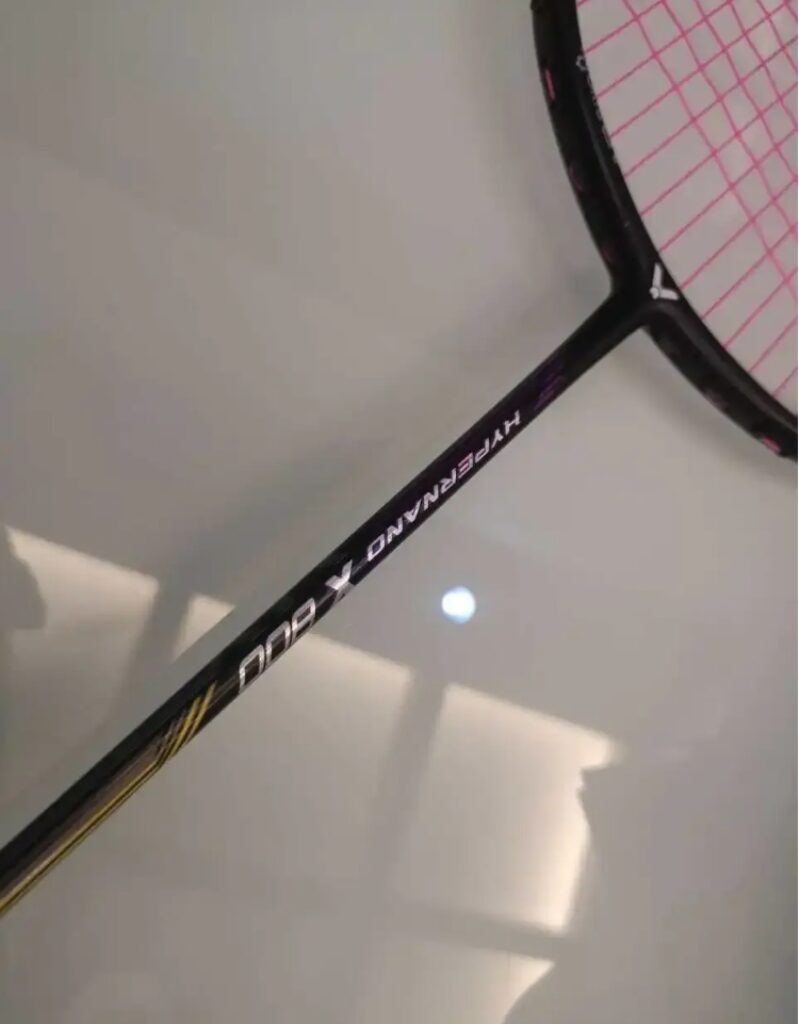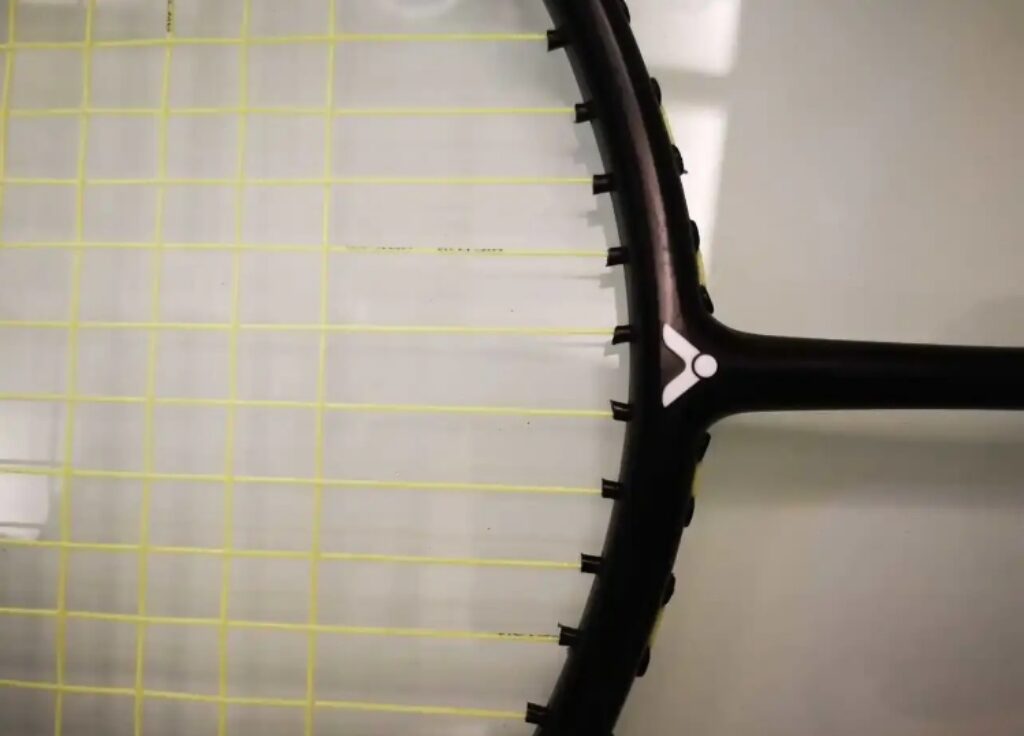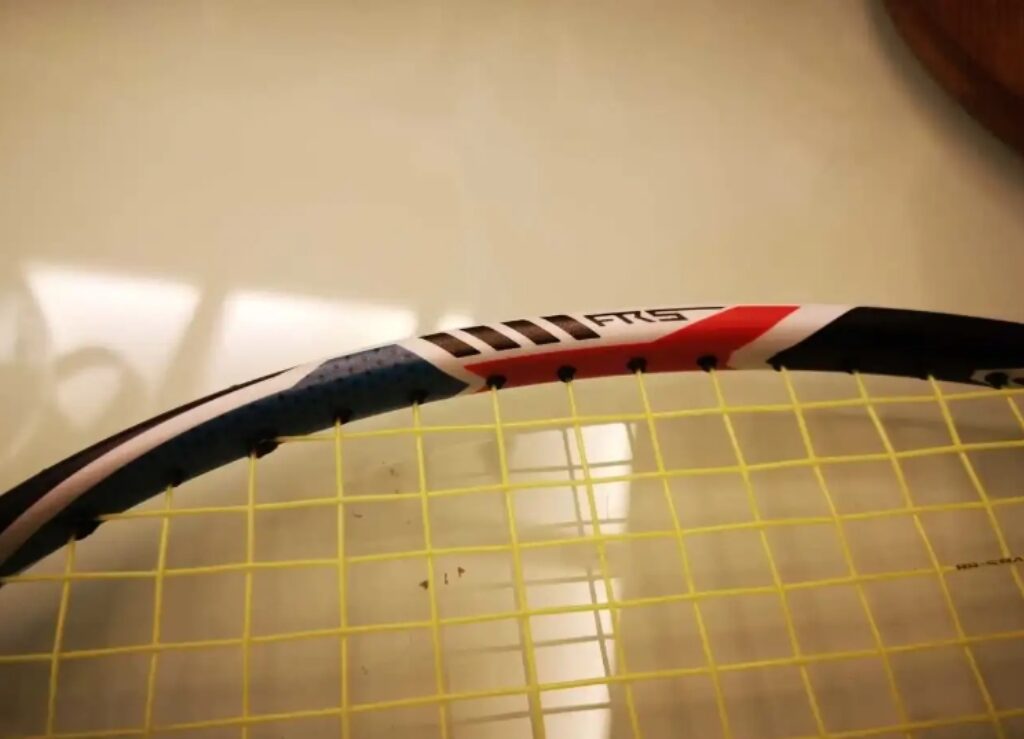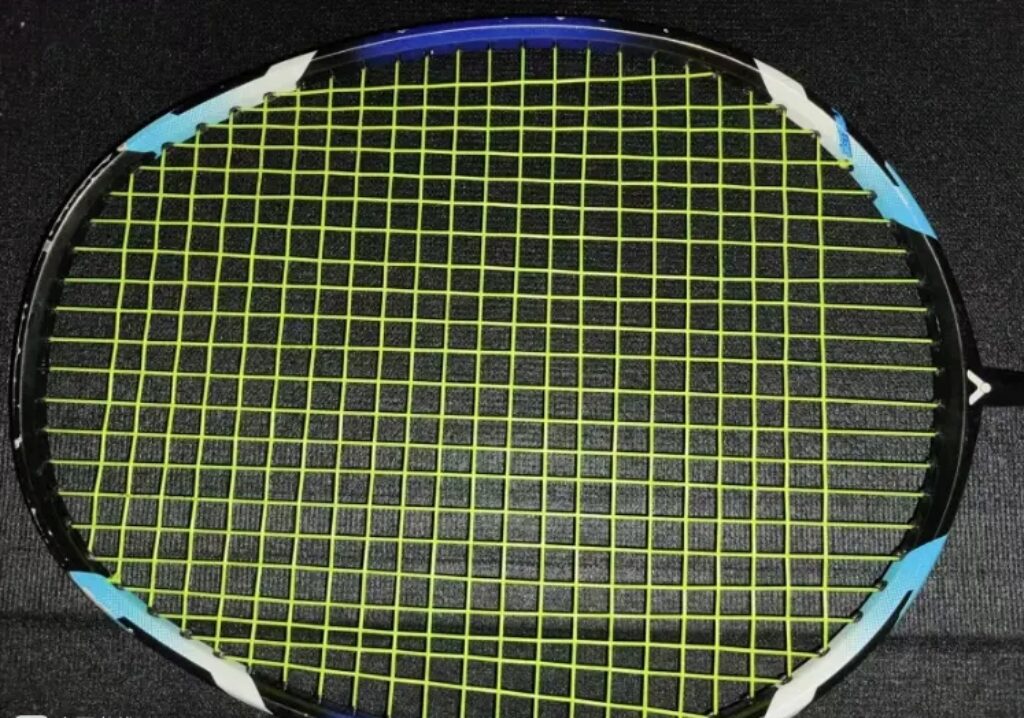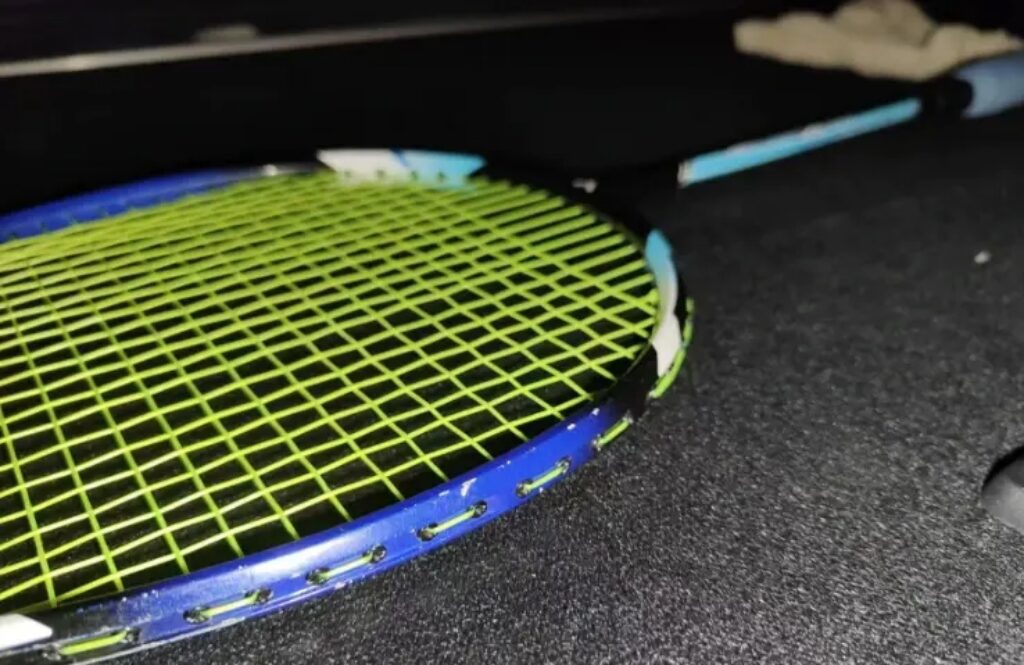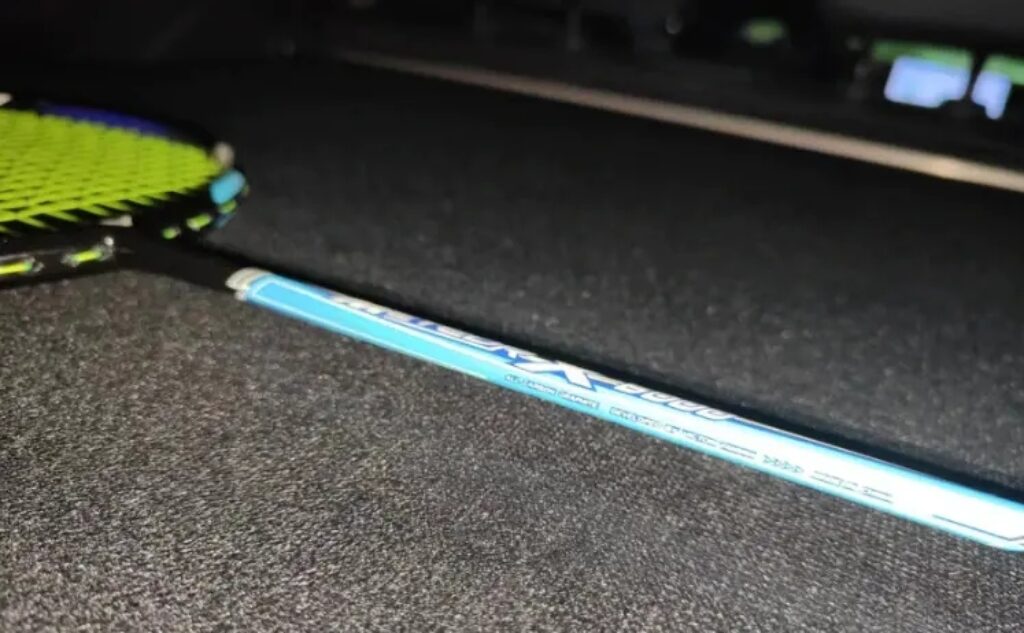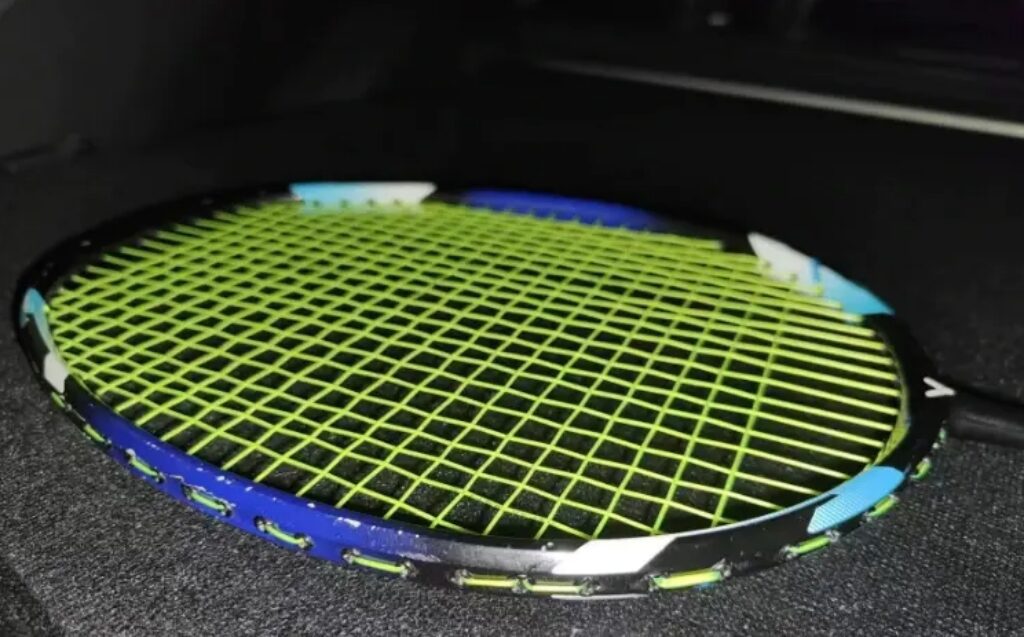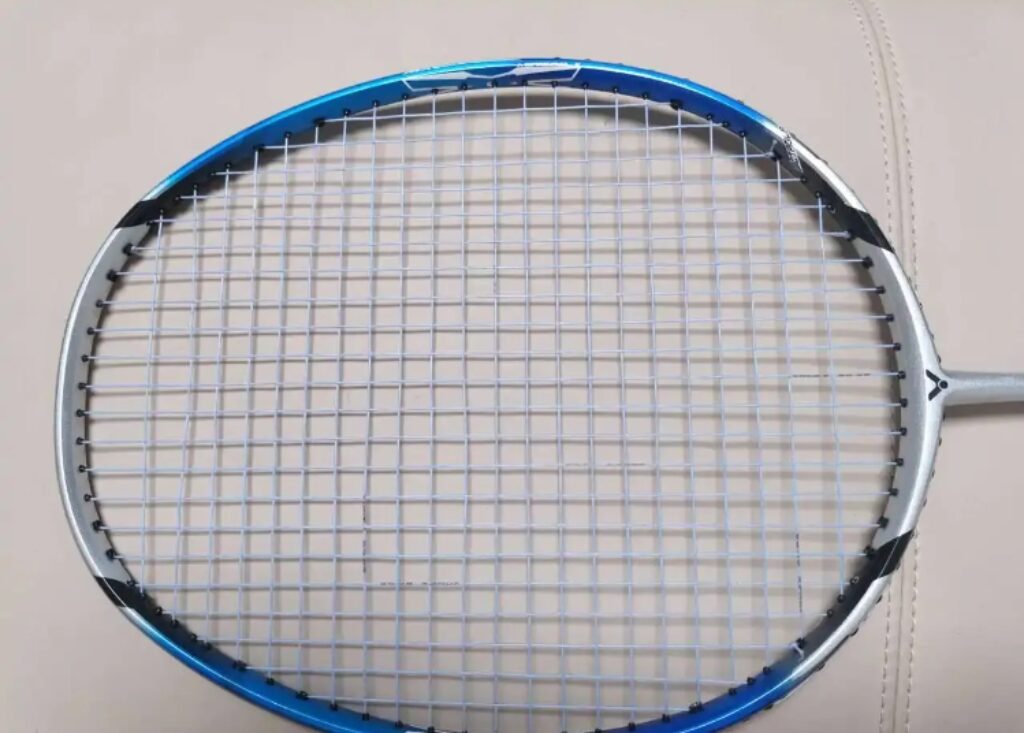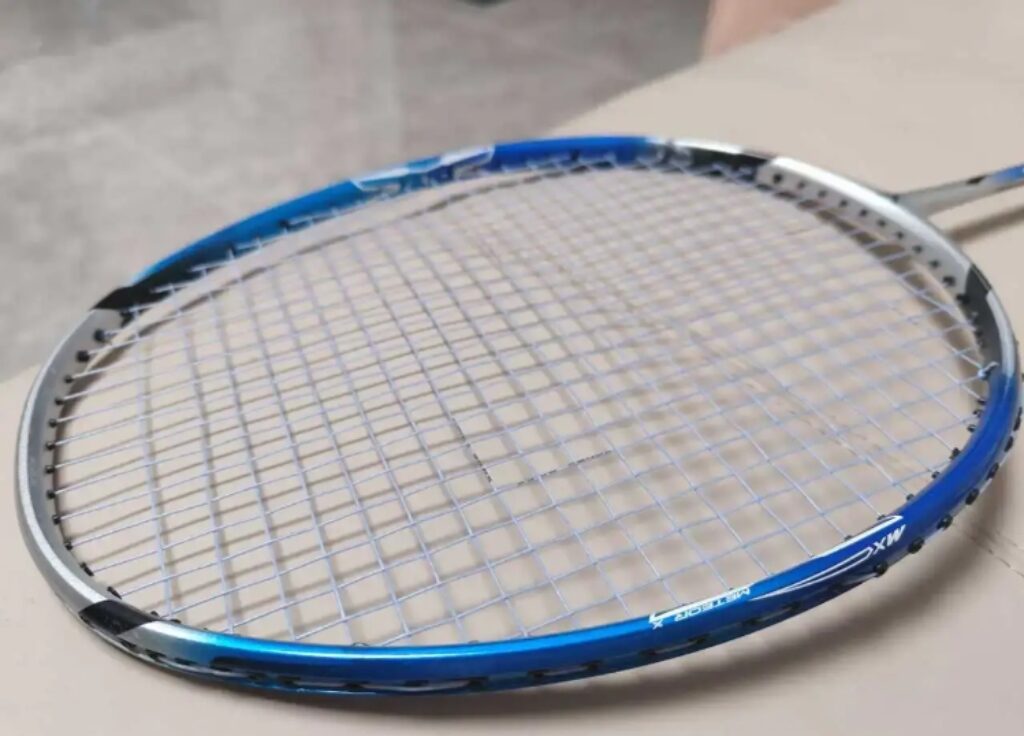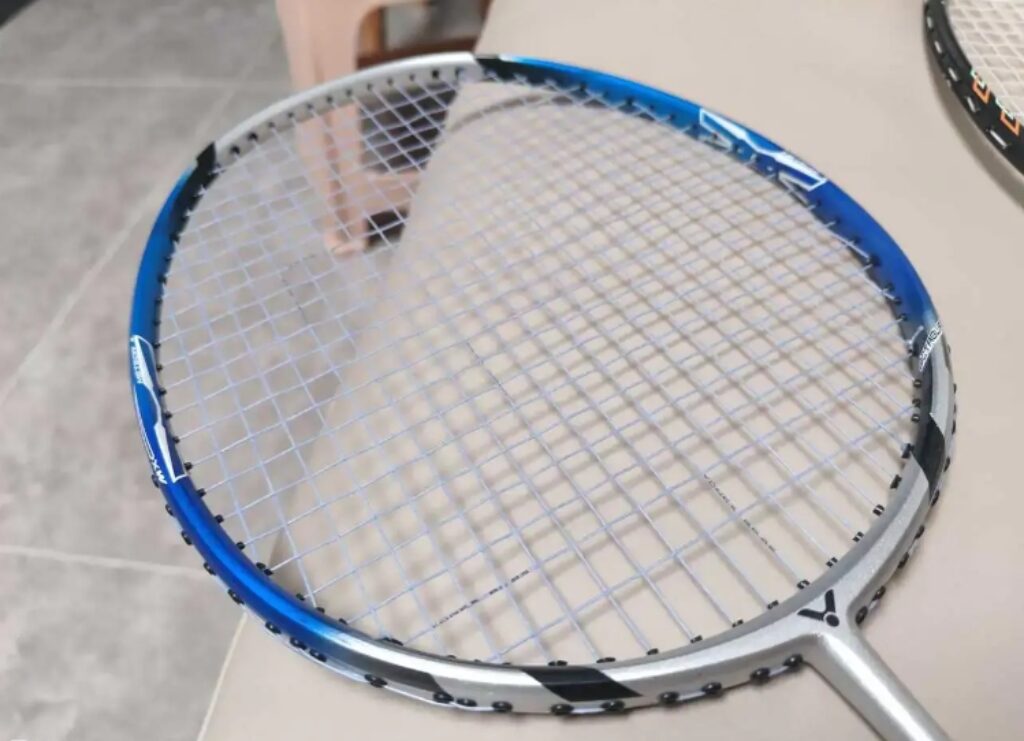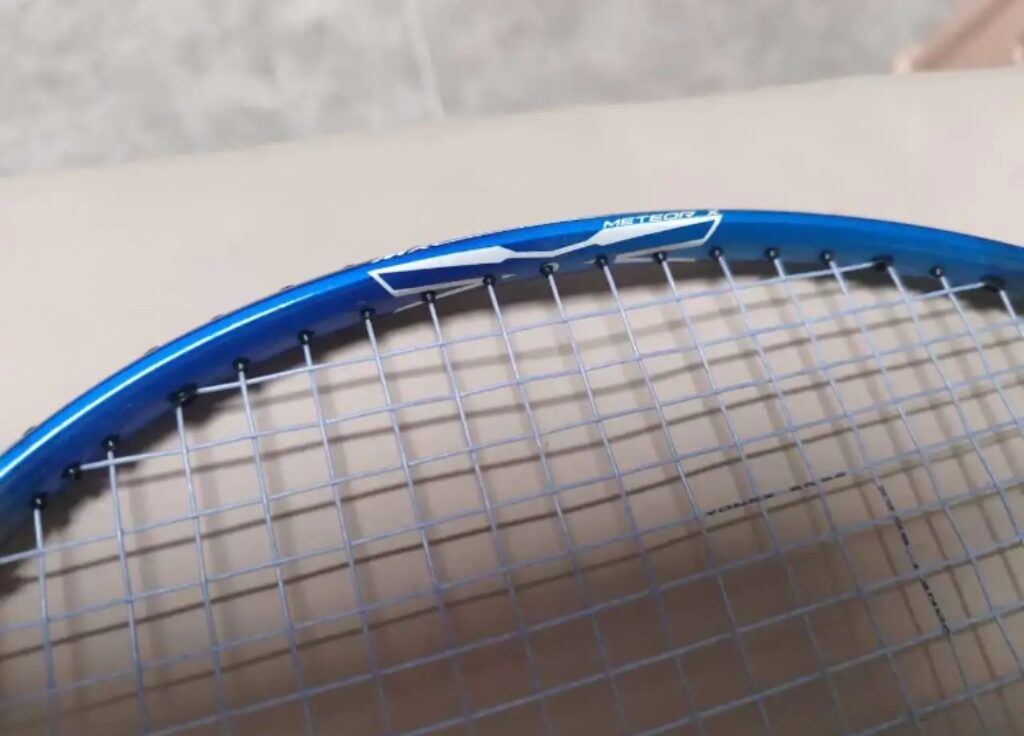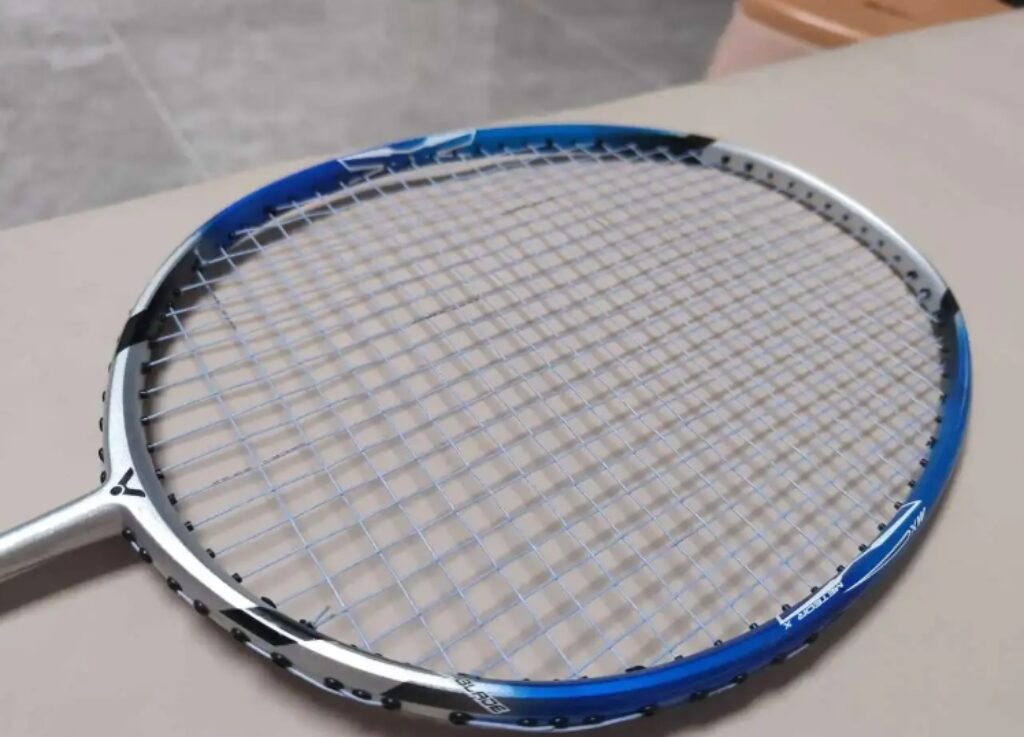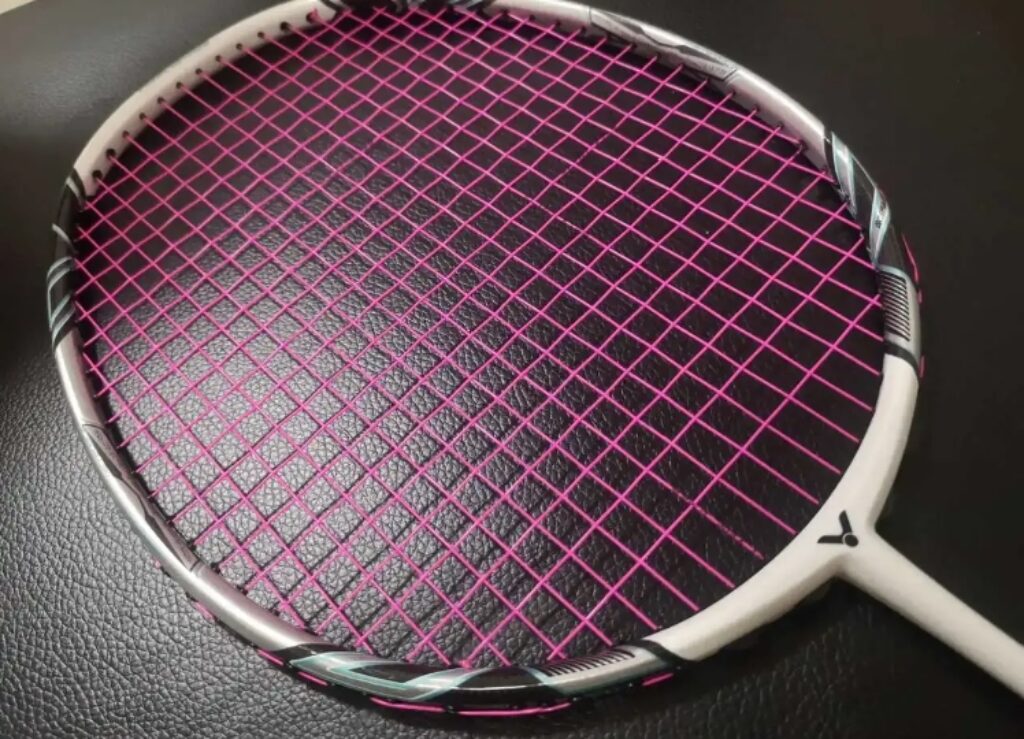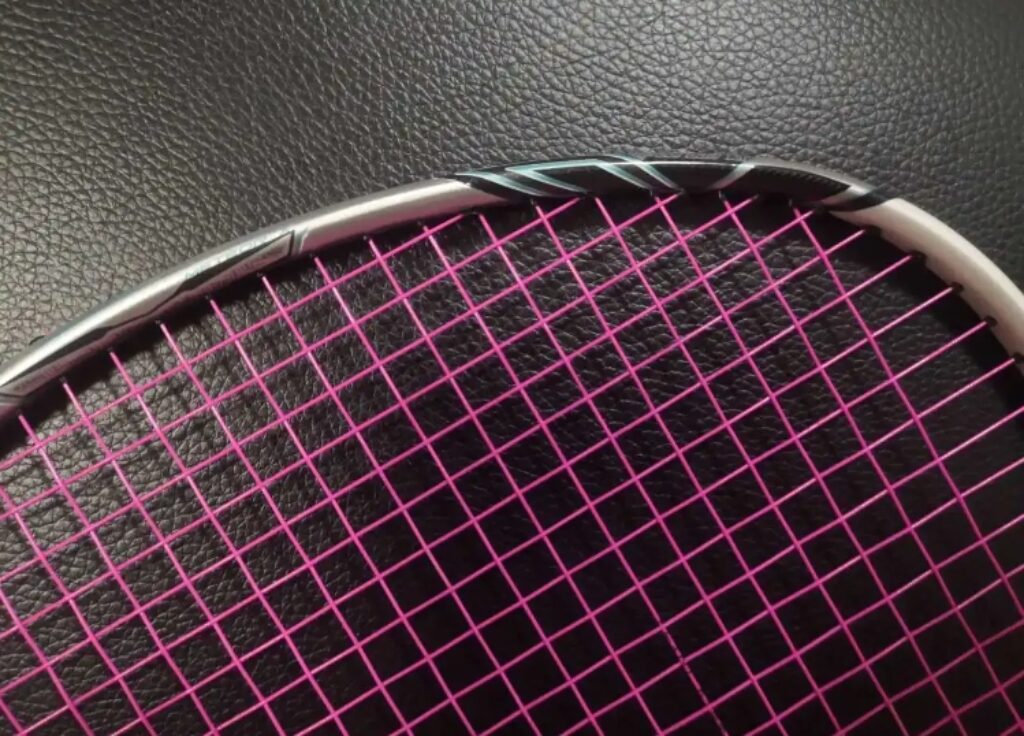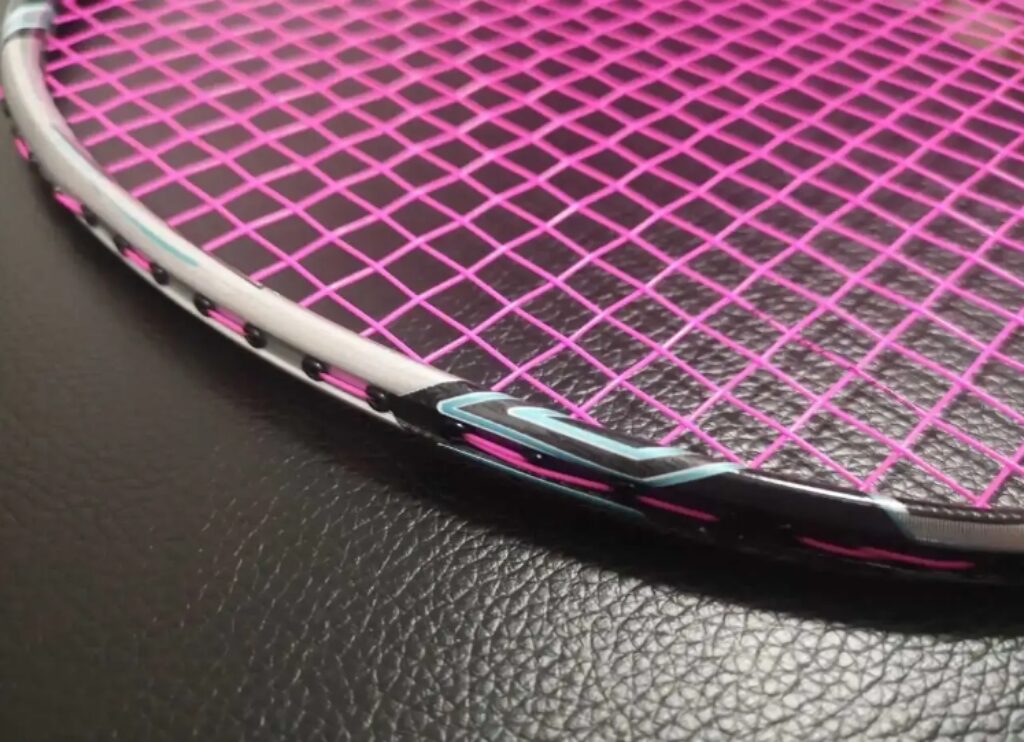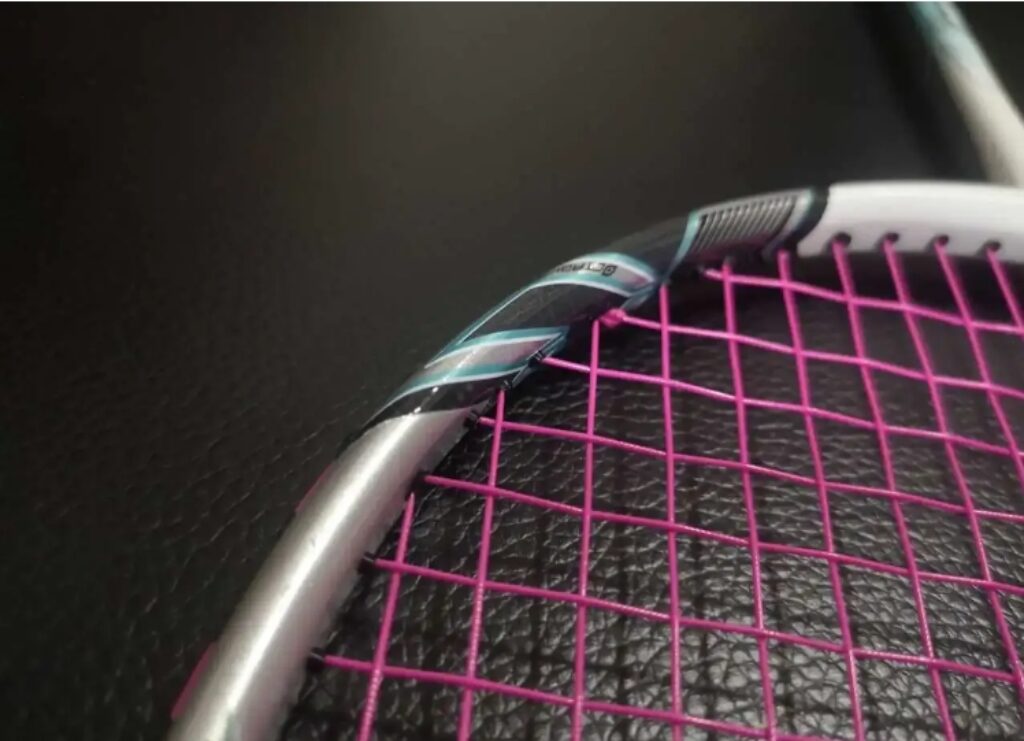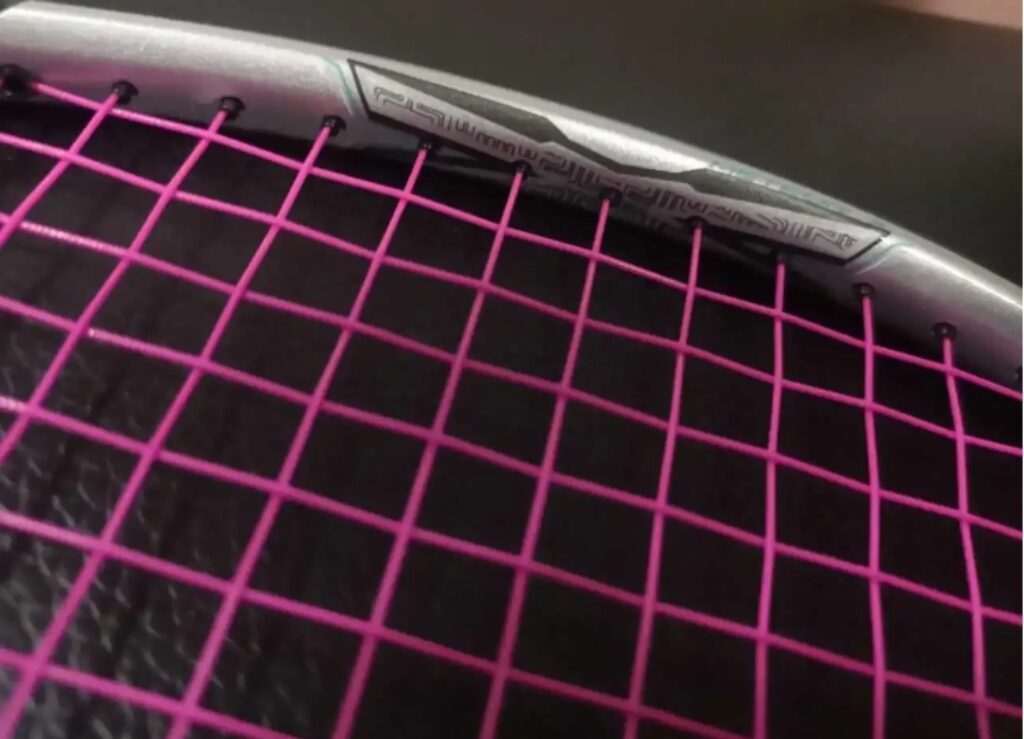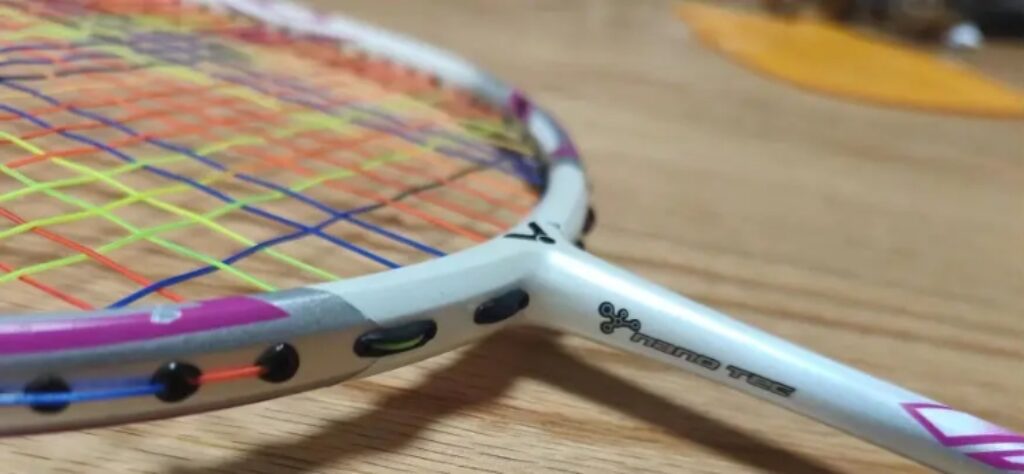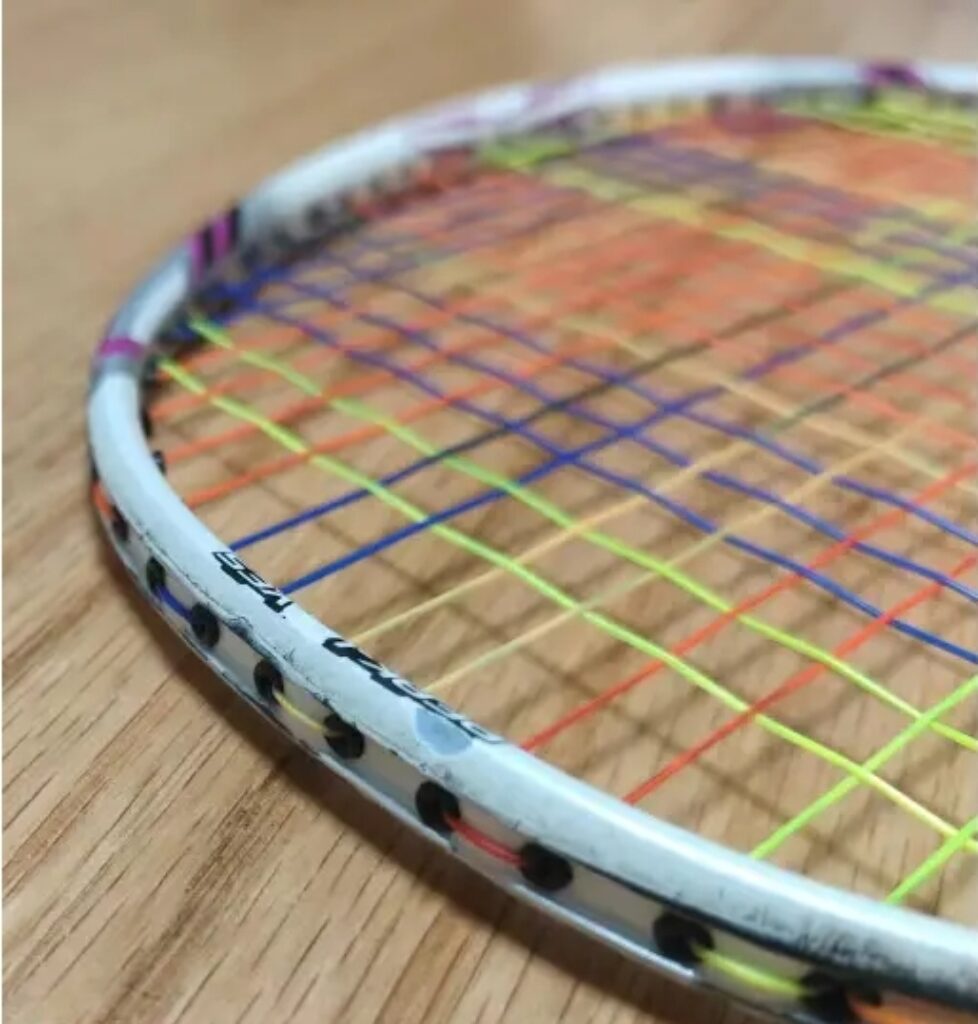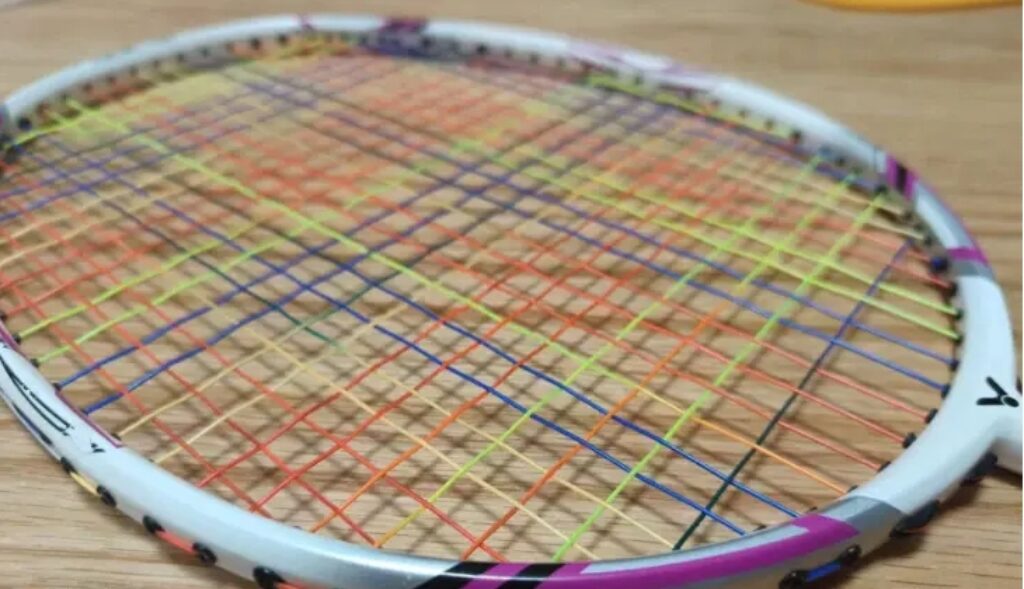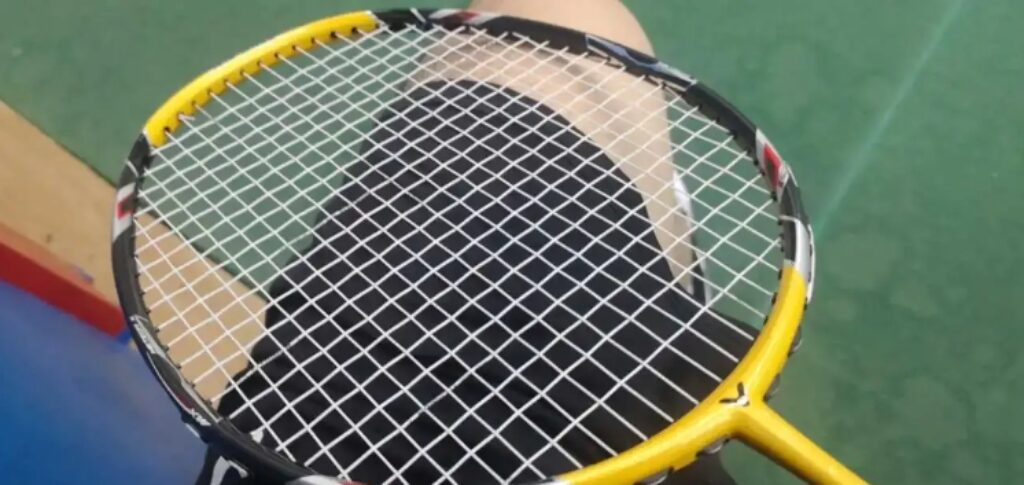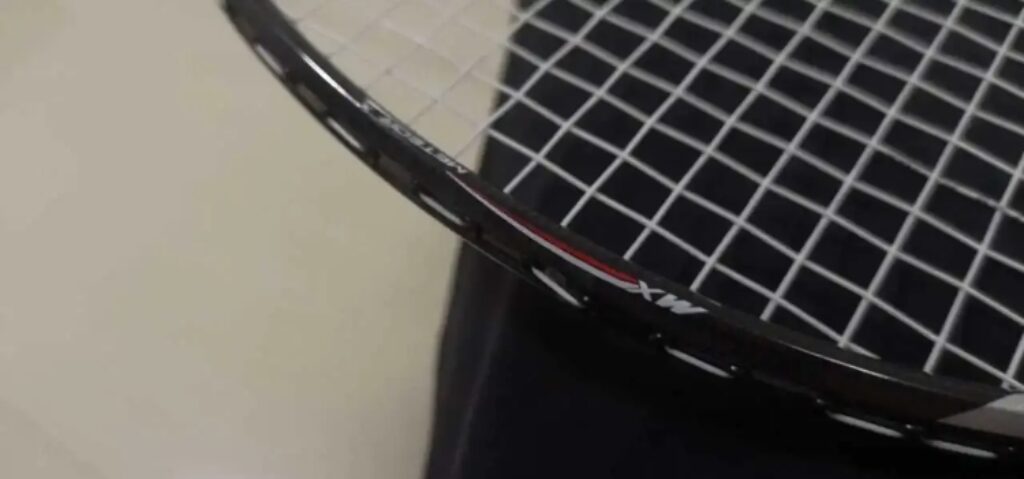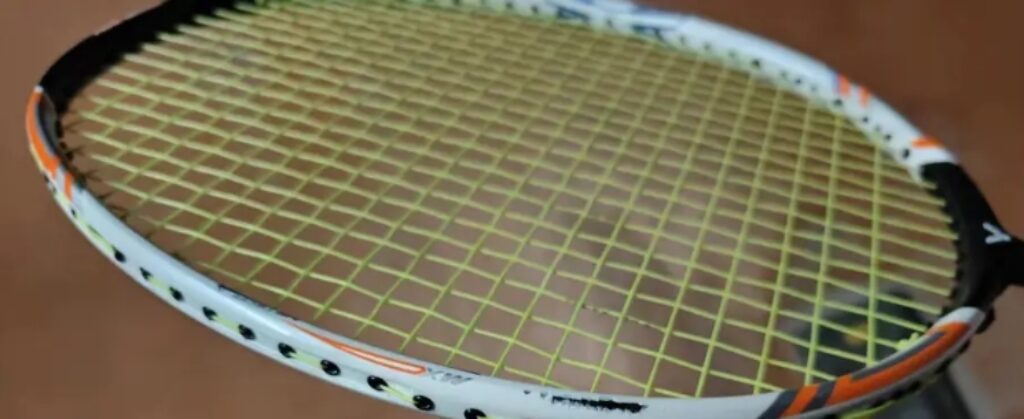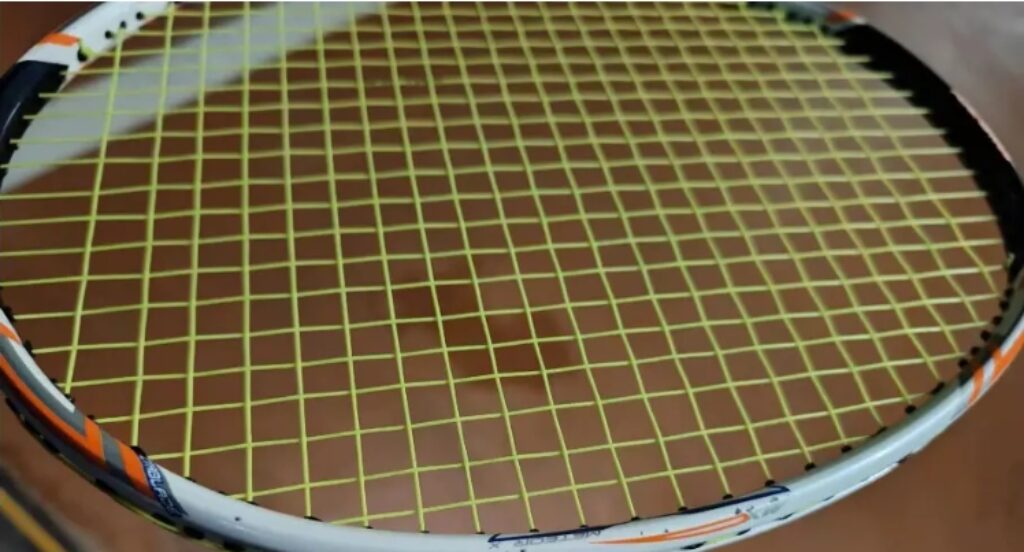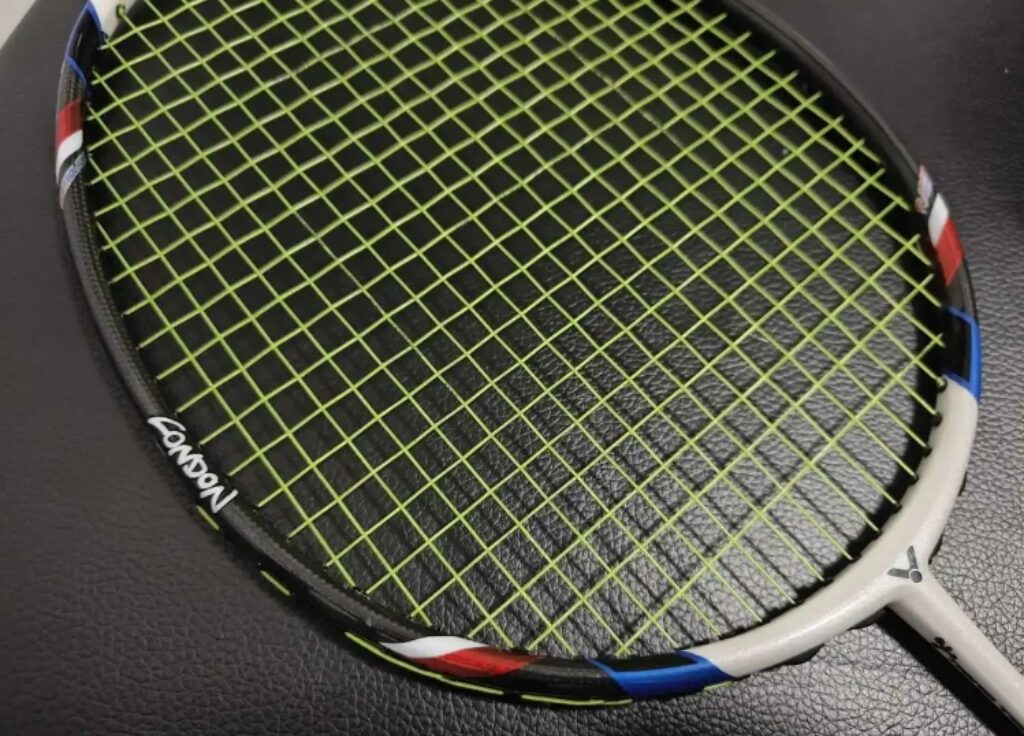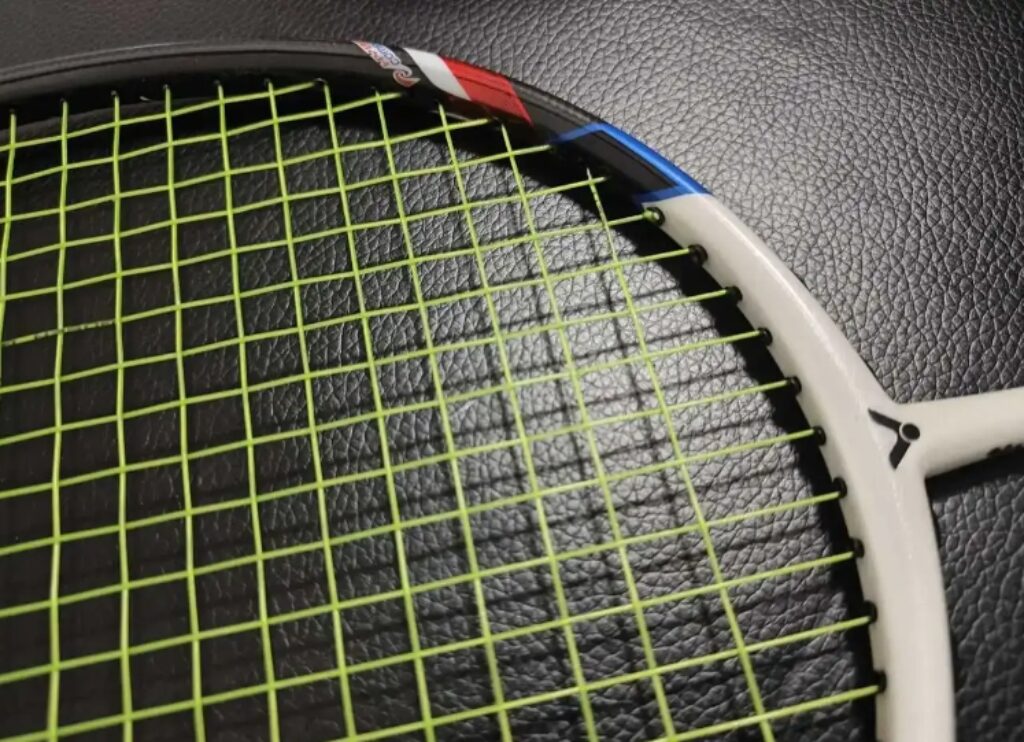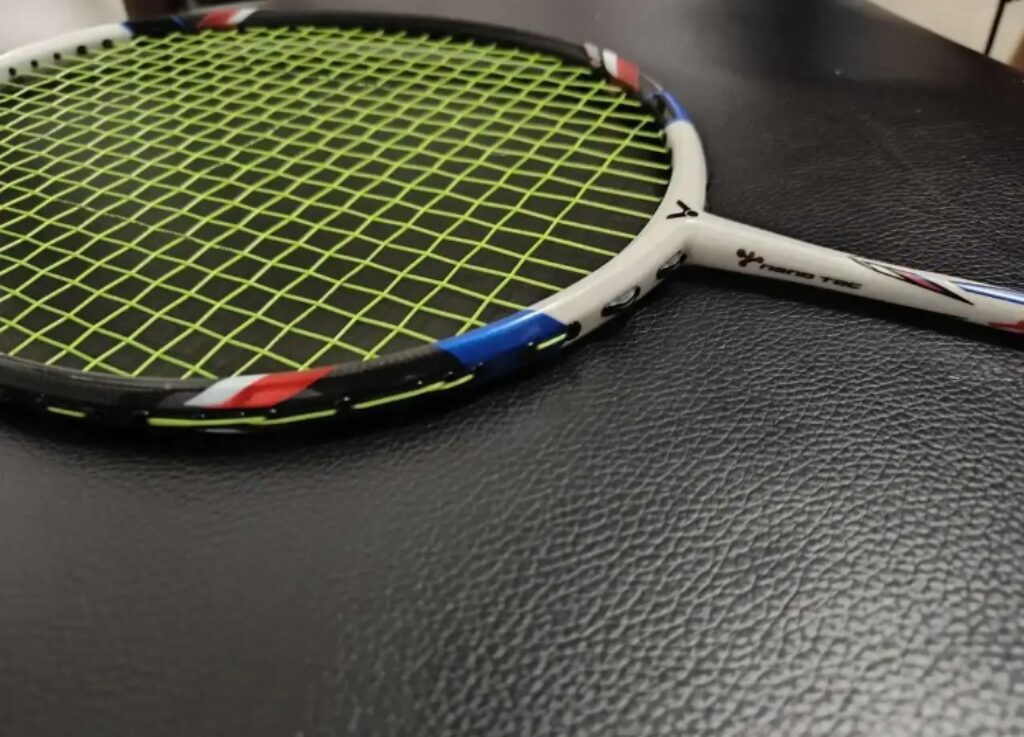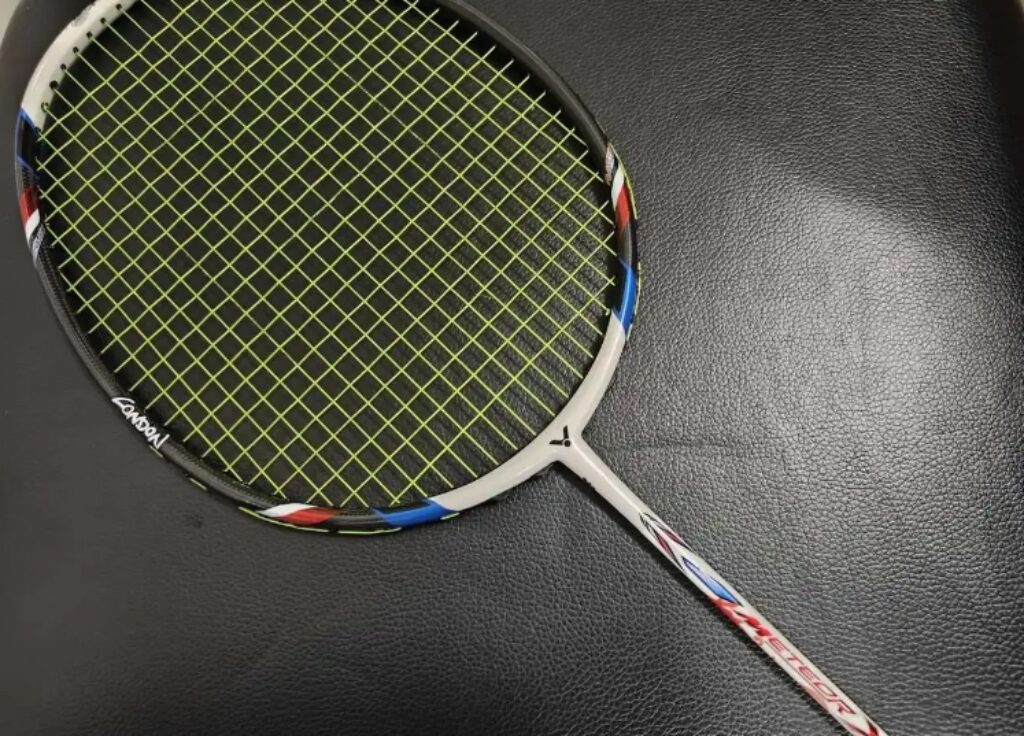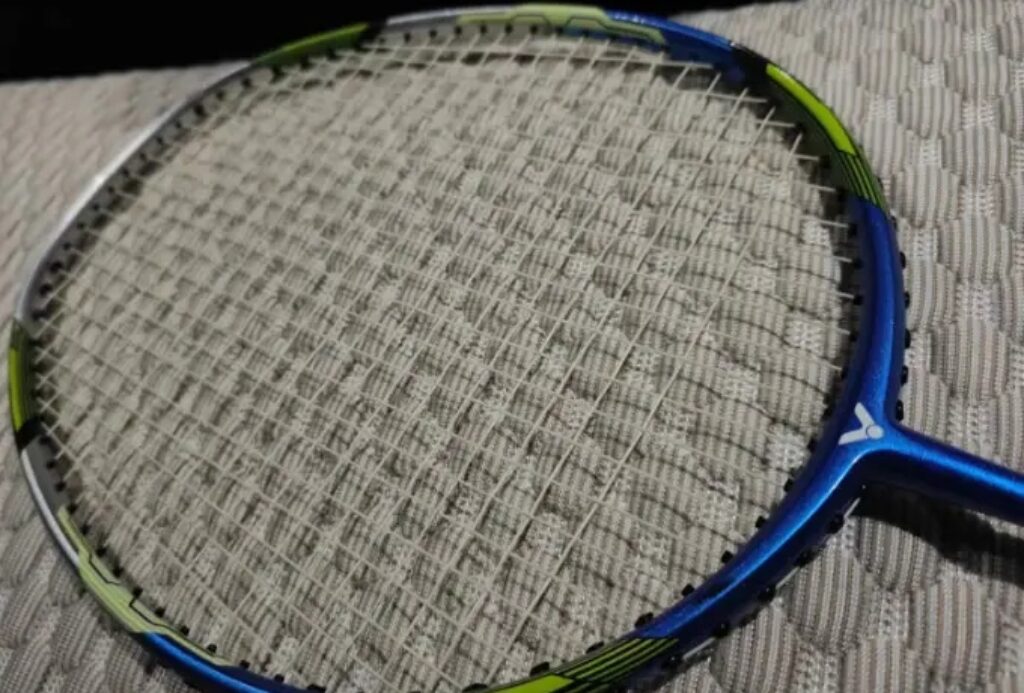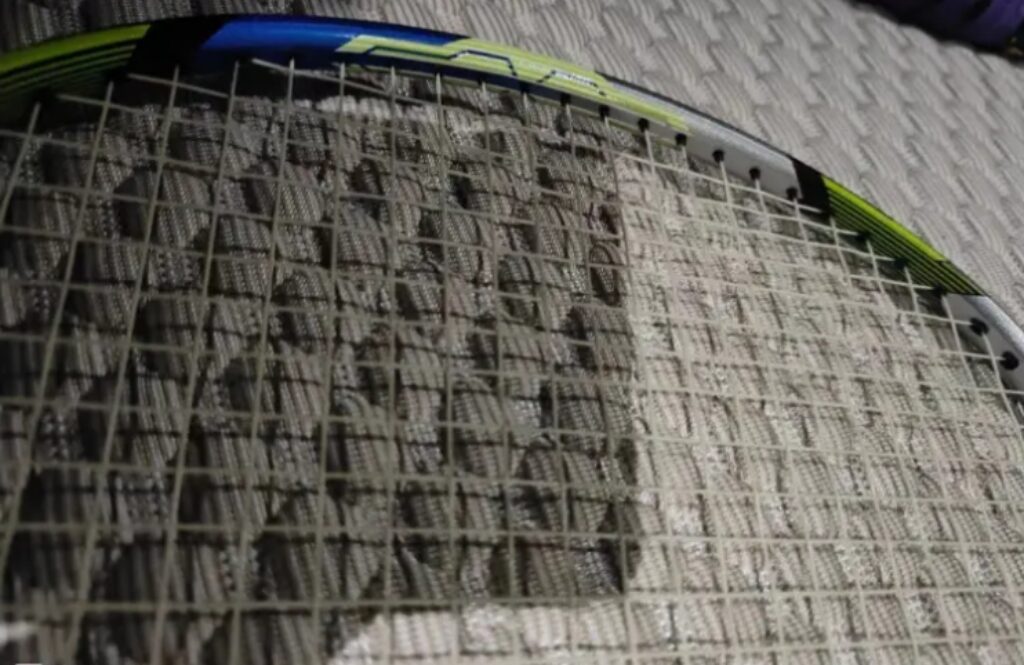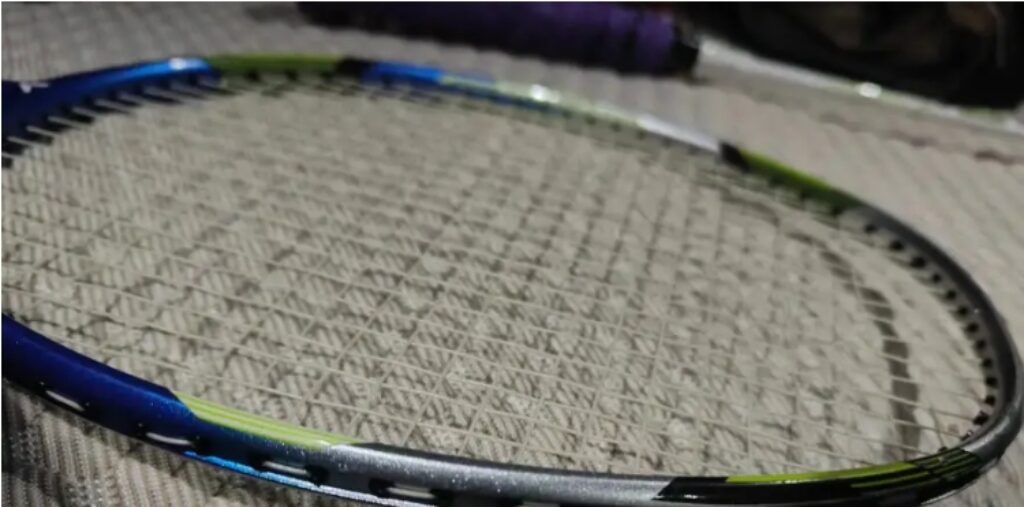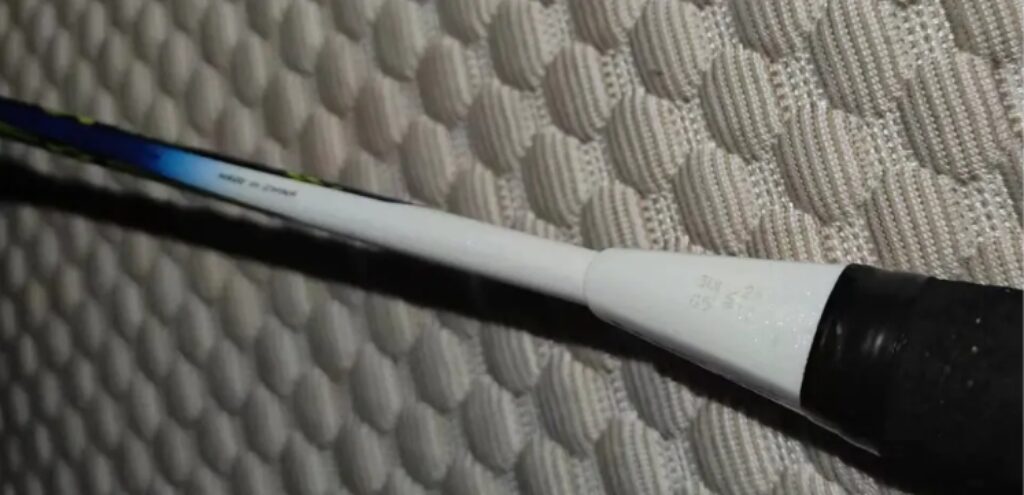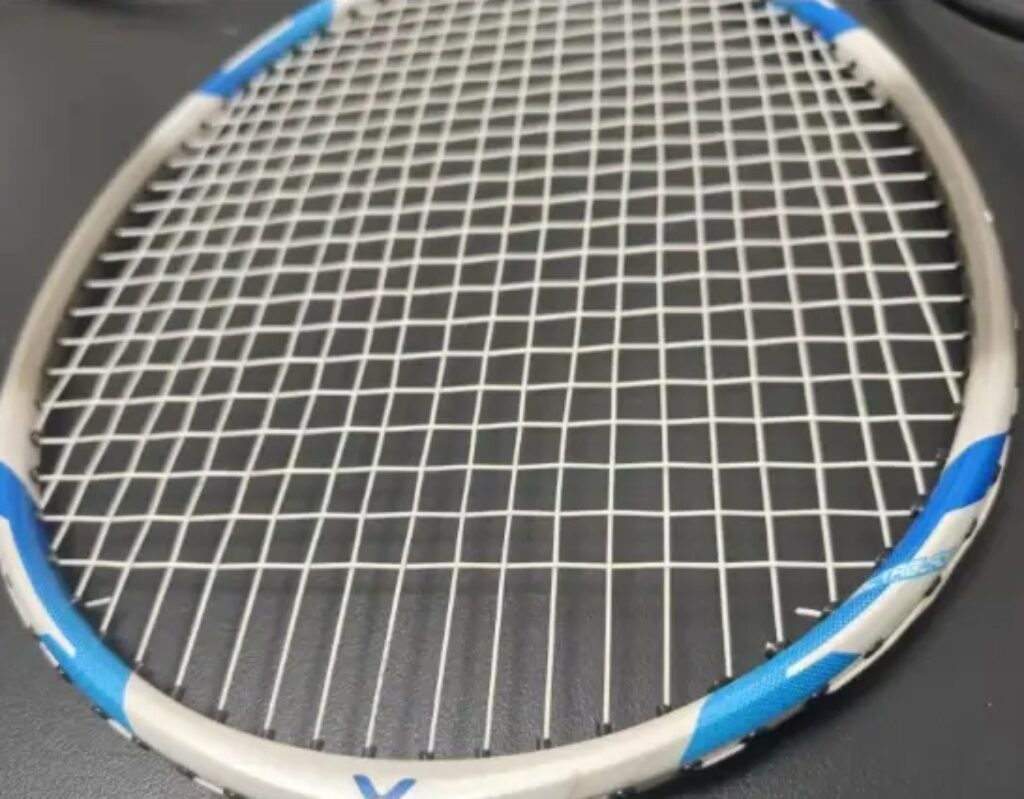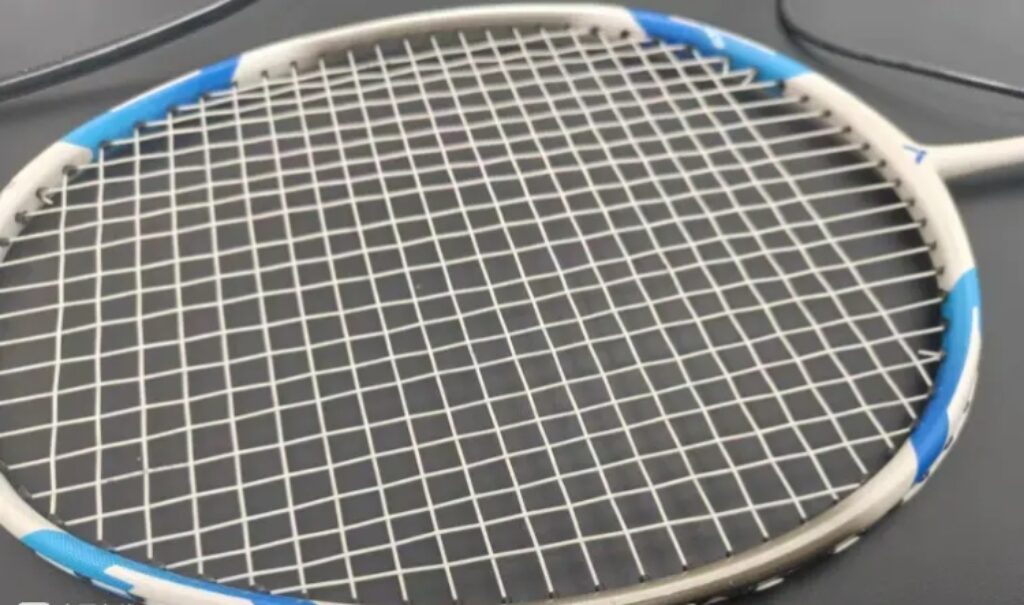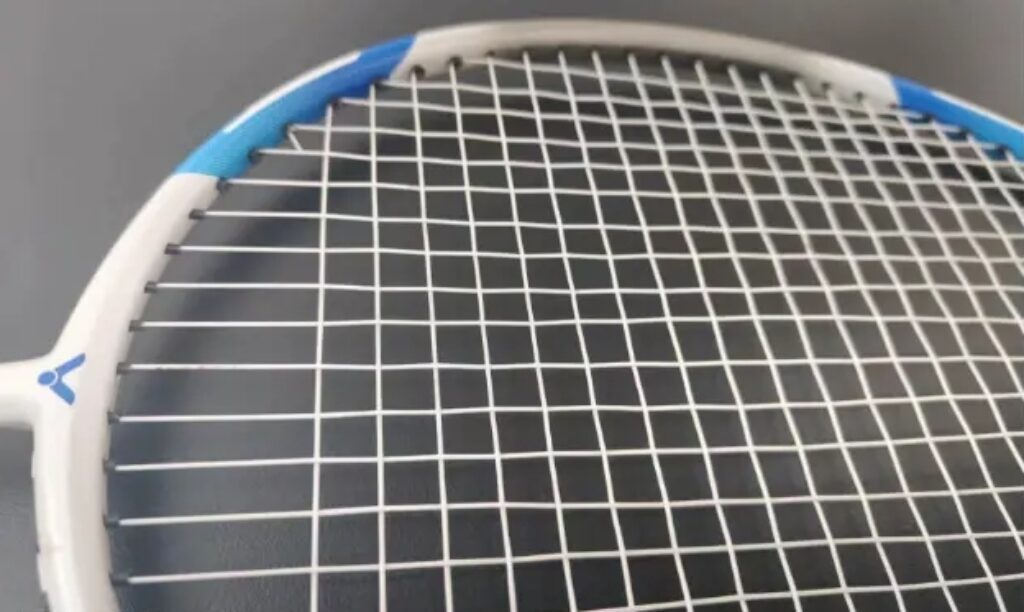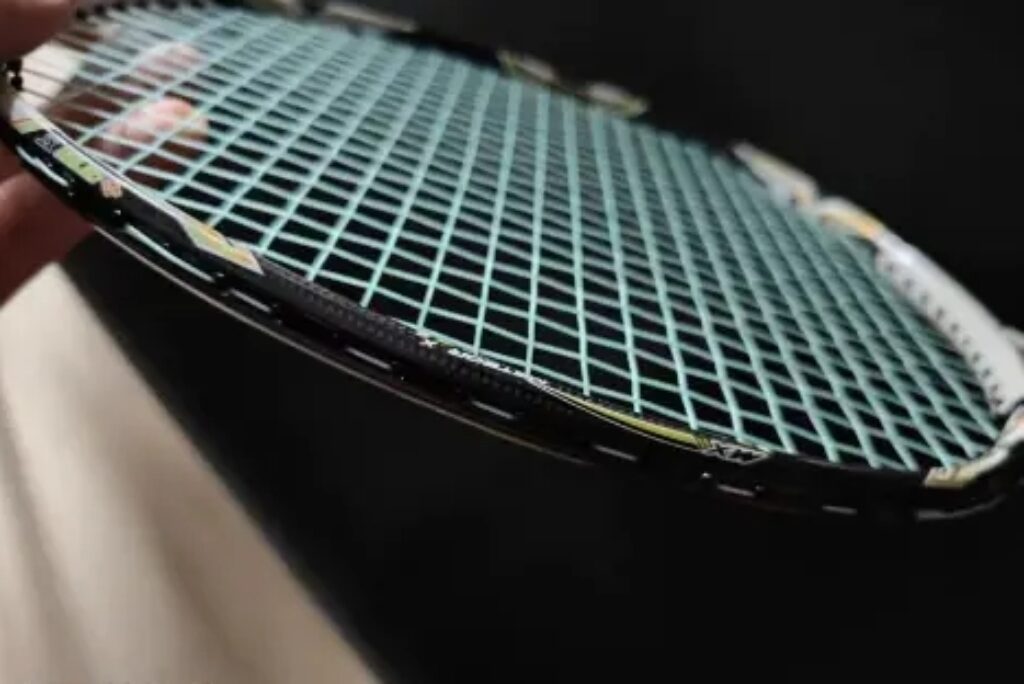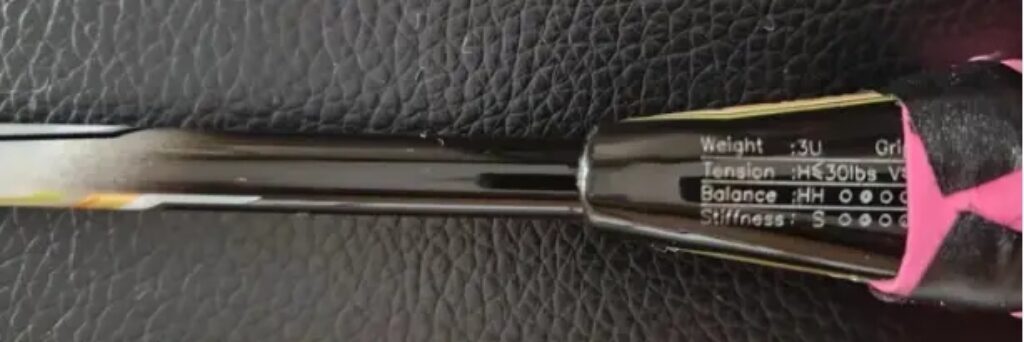This might be the flagship of the HypernanoX series. The HX800 once stood out with its reputation and popularity. As one of Tai Tzu Ying’s former rackets, the HX800 won over many players with its unique feel and excellent performance. However, like many other Victory bestsellers, its destiny was the same—issues such as collapse and cracks ultimately became the main reason why many people hesitated to buy it.

Specifications:
3UG5, with base grip, total weight in playing condition is 92.9g, balance point 305mm, 6.8mm Pyrofil carbon shaft, length 215mm, stiff tuning, diamond aero frame, 76-hole string bed, 9-3 point string grooves, warranty up to 28 lbs, strung at 25–27 lbs with KT65.
This is a racket with a black base, but its black paint is very pure, like ink, without any grayish tone. The racket features plenty of technology, some of which is exclusive to the HX series. Back in the day, the diamond aero frame offered both swing speed and stability. The appearance of the racket isn’t outstanding, but the additional stickers and purer black color give it a decent texture. However, the stickers and paint are quite fragile and easily show defects.
The HX800 is clearly a high-end piece of equipment aimed at advanced players, and its power threshold is not low. In terms of head weight, it definitely qualifies as a balanced racket, which aligns with my overall impression of the HX series. However, both the shaft and frame feel might discourage beginners. From my perspective, the shaft’s stiffness is comparable to that of the HX900x, but the latter’s more pronounced head weight makes it excellent for leveraging power. In contrast, with the HX800, you’ll mostly have to rely on your own strength—even for warm-up clears, the 3U version in my hand still felt quite stiff.
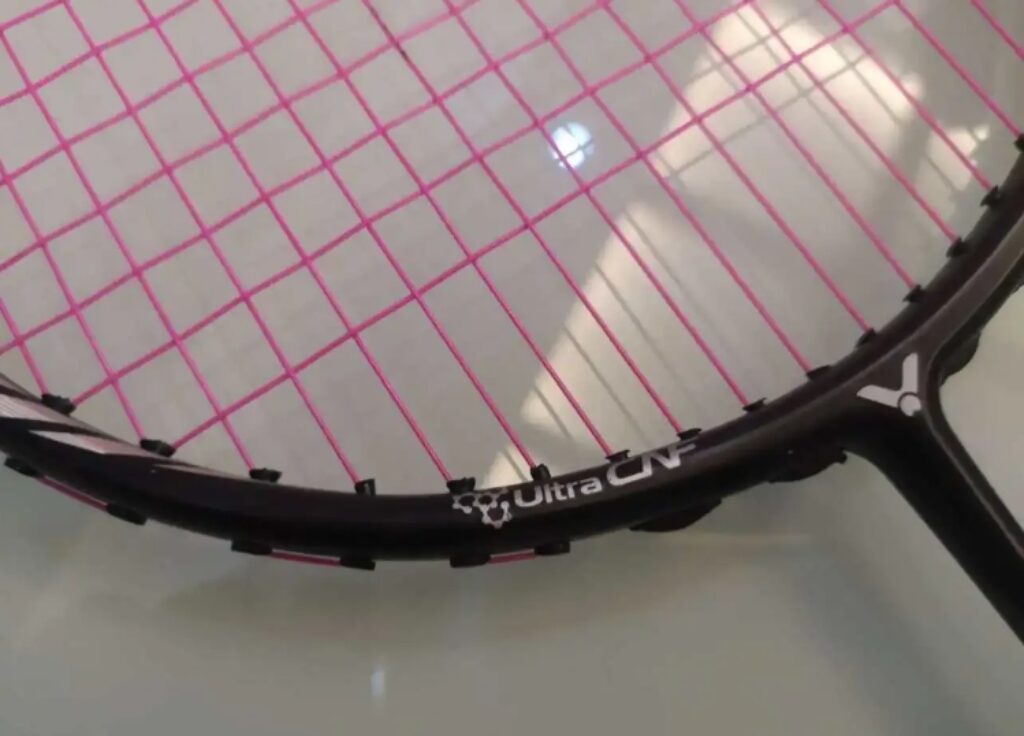
There are two twin versions of the HX800: the LTD-C and LTD-P. In my previous trials, I noted that in terms of shuttle hold, actual swing weight, and feedback, the HX800 sits between the two. Although the shuttle releases crisply, the 800 doesn’t give me the same surprising swing speed as the LTDC.

One advantage, however, is that this racket has low shock absorption, giving it a raw, hand-to-hand combat feel. For instance, when defending against smashes, the sense of power return to the backcourt feels very effortless—especially when facing opponents who like to hit hard. It’s almost as if you don’t need to use much physical energy to drive them back effectively. This direct feeling also translates well during flat drives, where the response delay is very low, resulting in a high-elasticity and stable shuttle release. The current 3U specs, though, don’t quite offer the most seamless experience in continuous drive-play. Otherwise, this racket would excel at flat exchanges. However, for players who prefer control, the racket’s lack of shuttle hold could reduce forgiveness during delicate net battles, as the adjustment window between high lifts and net errors is very small.
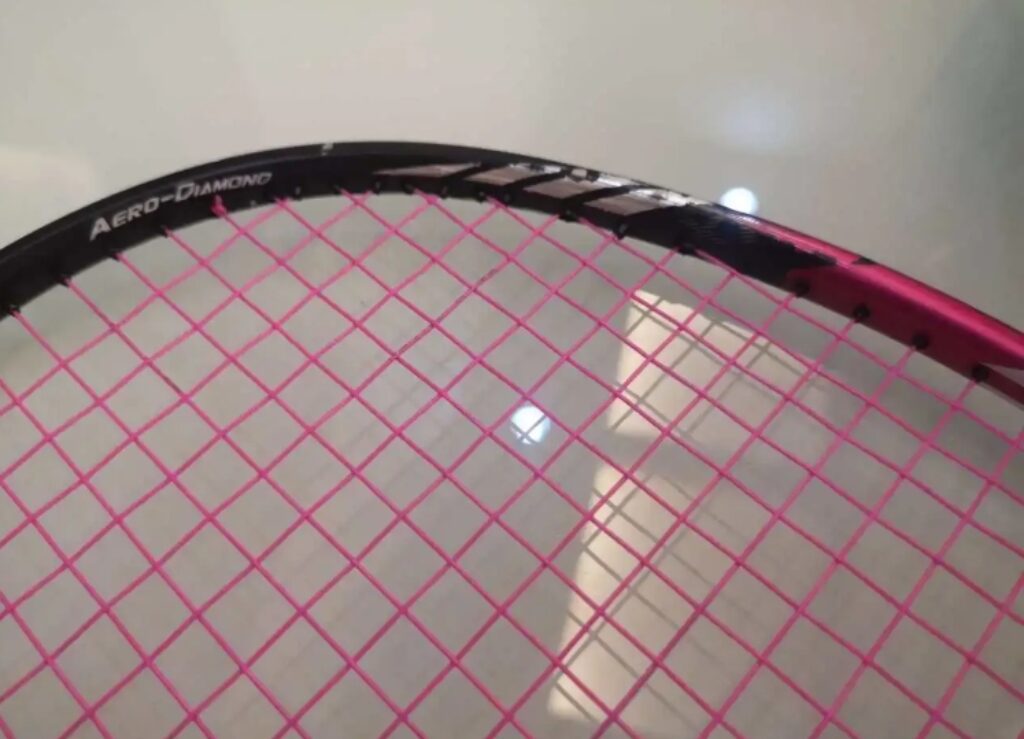
Since the shuttle releases immediately, the heavy smash performance of the HX800 depends entirely on the player’s timing. The more focused the hit, the more lethal it becomes. This aspect is quite unforgiving—similar to the DZS. When hitting sharp smashes, the shuttle releases quickly and unexpectedly, but during heavy smashes, it seems to require much more concentrated power to achieve somewhat satisfactory downward pressure. I recently experienced this same sensation with the first-generation Protech 2013P. I believe this is where the HX800 falls short compared to the MX80N. Personally, I prefer rackets that are more lightweight and easy to generate power with, so I suspect that the 4U version of this racket would be a better option for feeling that drive sensation.

This racket was borrowed from a local friend.
I had previously tested this racket once. Despite my desire to write about it after our first encounter, I knew at the time that I couldn’t fully explore its potential, so I didn’t rush into writing. After borrowing it again recently, I got another chance to experience it. However, this reunion, two years later, was a bit less enchanting than before.
